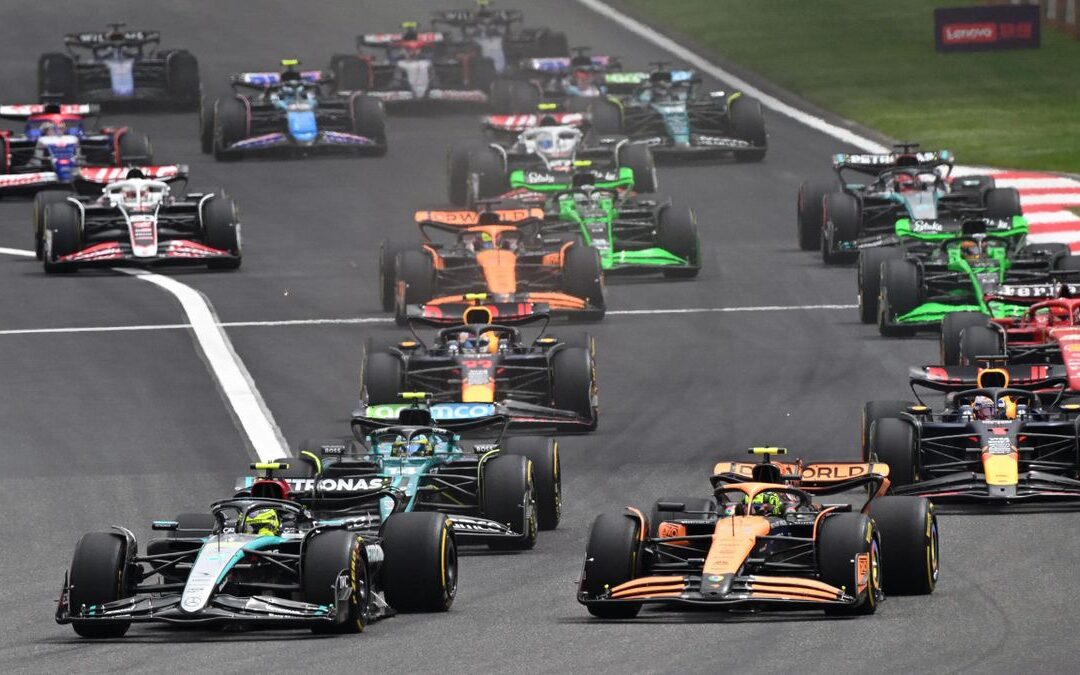F1 2022: Mercedes will have only 280 hours in the Wind Tunnel, Haas 460
The 2021 Constructors’ title was deservedly won by Mercedes; thanks to the technical recovery on the W12, Lewis Hamilton managed to score big points from Silverstone onwards, almost securing his eighth Drivers’ title.
Nevertheless, the time has come to analyze a key point of the upcoming season.
The new cars are obviously in the final stages of production, while development – which has been going on for a year – will certainly not end with the presentation of the cars. Research and development never stop in Formula 1, and from this year on the teams will be even more limited by both the Technical and Sporting Regulations: the number of hours granted in the RCFD simulations and then in the wind tunnel will be decided by the 2021 season standings.
The Balance of Performance will affect some teams
Having won the Constructors title, from January 1st of this year the Brackley team will have 280 hours available in the wind tunnel “during the aerodynamic test period” against – for example – the 460 hours granted to Haas, last in the 2021 standings. This is worth the chance to work on simulation verification or aerodynamic testing for more than 7 hours a day against the 4.5 allowed to Mercedes.
In 2021, thanks to a (ruinous) placing in the 2020 Constructors’ standings, Ferrari was allowed 102.5% of wind tunnel/RCFD time (against the 90% allowed to the first team in the standings) – an advantage corresponding to one more “session” (a weekly cycle of 50 hours) of development, which according to the engineers is worth 0.1 seconds per lap in terms of gains.

The limits for RWTT and RCFDs are as set out in this table taken from Art. 9.3.6 of the Sporting Regulations
According to the new changes made to the Sporting Regulations, in 2022 Ferrari will have 10% more RCFD/wind tunnel time compared to Mercedes and 5% more than Red Bull – but 5% less than McLaren and then all the other teams according to their position in the 2021 Constructors’ Standings – at least until June 30 of this year, when the new standings will reshuffle the values for the second half of the season. Maranello has updated the correlation in the wind tunnel, increased the data simulation staff and acquired engineers from Red Bull and Mercedes.
Ferrari shares important components with Haas

As told to AMuS, Mick Schumacher will not have the chance to test the new car in the simulator – which might be a disadvantage at least in the beginning of the season. However, the young German driver has still some reasons to smile: first of all, he should be able to use the next-generation Ferrari simulator (with Haas software installed) and then take into account that Ferrari will be able to supply several components to the VF-22 – including the gearbox with the rear impact structure, the front and rear suspensions, the wheel hubs, the hydraulic systems and, of course, the new Power Unit, equipped with the ERS upgrade never used by Ferrari’s customer teams in 2021. Simone Resta’s staff was therefore able to concentrate heavily on the chassis and aerodynamic elements.

Going back to this year’s limitations, thanks to the budget cap AlphaTauri was able to start using the wind tunnel of their “sister” Red Bull (just like Haas did with Ferrari), finally being able to make use of a 60% scale model as opposed to the 50% model they were using before. This should help the good technicians of Faenza to develop an AT03 more consistent with load variations, an evident flaw of the AT01 and AT02.
Another keep to monitor closely – development wise – is Red Bull.
The Milton Keynes team used much of their allocated development time in 2021 to improve the RB16B throughout the season. The goal was clear: Red Bull intended to bring the Drivers’ title back home with Max Verstappen, and received a crucial boost from their engine partner Honda when they anticipated most of their 2022 Power Unit elements on the 2021 model.
Of course, no one should underestimate Mateschitz’s team which, with Adrian Newey, can always count on a trick hidden up their sleeve.
It is well known that the new single-seaters will have aerodynamics – above the floor area – that are severely limited by the new regulations. Gone are the sophisticated bargeboards (i.e. the flow diverters between the front suspensions and radiators), something on which teams have spent hundreds of hours of development in the past.

Goodbye, bargeboards. The 2022 car will not make use of this complex aerodynamic element – Illustration by Rosario Giuliana
After all, “the Devil is in the details” – as Simone Resta said some time ago; other high-profile engineers are of the same opinion: every testing hour in 2022 will be used to spike up the development curve which seems likely to become one of the steepest in recent years.
A car that is good from the get-go is always the determining factor in the inauguration of a successful technical cycle; it will be crucial for teams to start from a good basis – given the fact that from 2022 on the engineers will have less and less time available to develop their cars.
Author: Giuliano Duchessa
Illustrations: Rosario Giuliana
Translation: Sara Esposito









